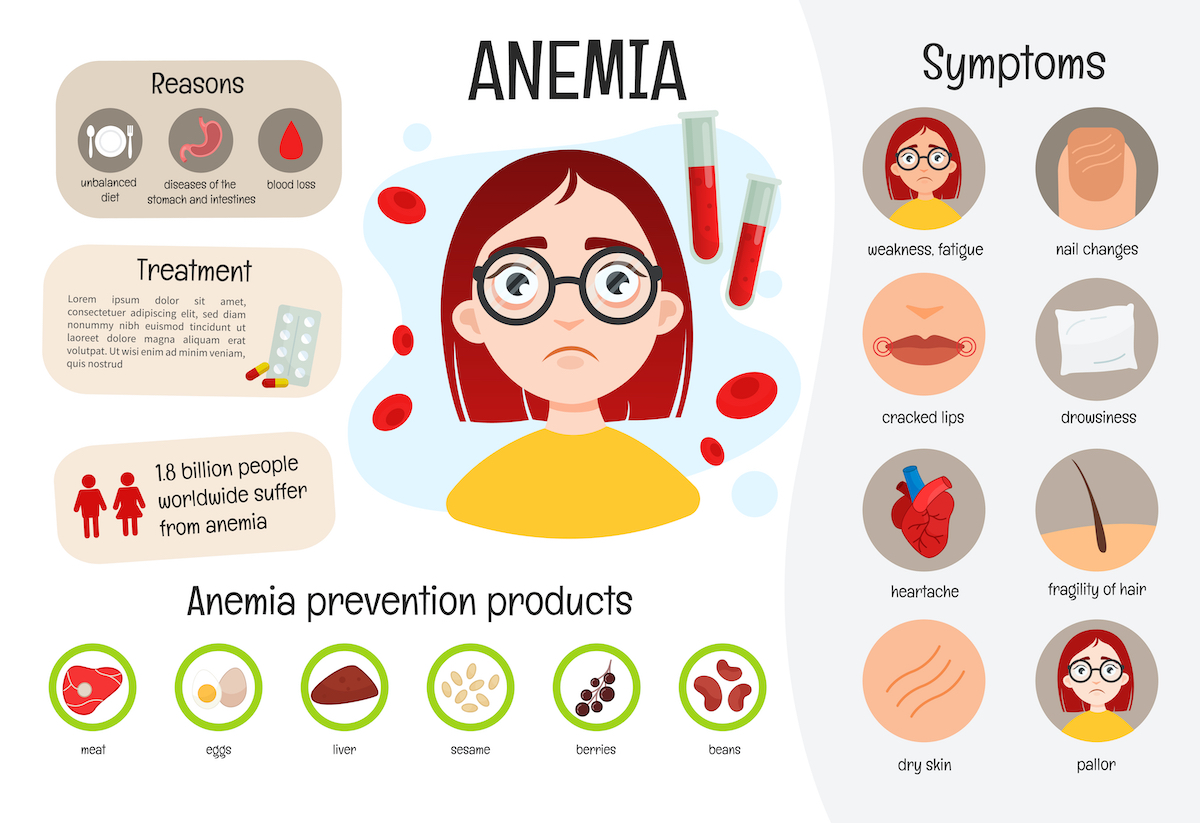Anemia is a common blood disorder that affects almost 33% of the population worldwide. In the United States, there are about 3 million people diagnosed with some type of condition. As it is a common disorder with possible life-threatening complications that can affect anyone (from newborns to pregnant women, to senior citizens), it’s important to know how you can recognize this and what you should do next.

What Is Anemia?
First, it’s good to know what this condition entails and what kind of types there are. Well, it’s a term for when the body doesn’t have enough red blood cells or the blood cells aren’t working like they’re supposed to. Without (enough) healthy red blood cells, the body won’t get enough oxygen, which plays a big part in how energized the body is and how it functions, both physically and mentally.
Types
There are many types. All these types are divided into 3 categories called: nutritional, inherited, and types caused by abnormal red blood cells. Among the types – divided per category – are:
Nutritional
- Iron-deficiency anemia, the body lacks iron, which prevents it from making hemoglobin
- Megaloblastic anemia, the body lacks vitamin B12 and/or B9
- Pernicious anemia, an autoimmune disease that prevents the body from absorbing vitamin B12
Inherited
- Sickle cell anemia changes the form of red blood cells from round flexible discs into stiff & sticky sickle cells. This can block the blood flow
- Fanconi anemia is a genetic disorder that prevents the bone marrow from making a sort of blood cells.
- Diamond-Blackfan anemia is a disorder that prevents the bone marrow from making enough red blood cells.
Abnormal red blood cells
- Hemolytic anemia is a form in which red blood cells break down faster
- Aplastic anemia is a form in which the stem cells in the bone marrow cannot make enough red blood cells
- Autoimmune hemolytic anemia is a form in which the immune system attacks/breaks down the red blood cells
- Sideroblastic anemia is a form in which there aren’t enough red blood cells and too much iron
- Macrocytic anemia is a form in which the bone marrow makes abnormal large blood cells
- Microcytic anemia is a form in which the red blood cells don’t have enough hemoglobin, making them smaller than usual
- Normocytic anemia is a form in which there aren’t enough red blood cells and contain not enough hemoglobin
The groups are categorized by what causes this condition. In some cases, this can be nutrition, in others inheritance, and in the case of the last group, it’s caused by abnormal behavior of red blood cells. Some types are short-timed and perfectly treatable, think of iron deficiency anemia. Unfortunately, there are also chronic types, like sickle cell anemia. All types cause red blood cells to drop (significantly).
It may not sound dangerous, but it certainly is. It can have life-threatening complications. Think extreme fatigue, heart problems, and premature births – in case the mother suffers from the condition. There are also types, such as sickle cell, where you can die from the disease. In the case of the elderly, it can increase the risk of death. This makes recognizing the illness incredibly important.

Warning Signs of Anemia
The symptoms vary by type and how severe it is. In the early stage, symptoms can be (very) mild. The worse the condition gets, the more severe symptoms become, also you may start experiencing more symptoms. In fact, in some cases, there are no symptoms at all, so you only find out when it is tested for. If they do, symptoms include:
- Fatigue
- Weakness
- Pale or yellow skin
- Irregular heartbeats
- Shortness of breath/trouble breathing
- Lightheadedness
- Chest pain
- Cold hands & feet
- Headaches
Treatment Options
If you suspect you’re suffering from this, it’s important to visit your professional healthcare provider and talk about your symptoms. Please do this even if you feel tired and have no idea why. Feeling fatigued is an early symptom of many physical and mental illnesses. Your healthcare provider will do some exams and tests and eventually give you the right diagnosis. If this is indeed this condition, then the following treatment options can be prescribed:
- Dietary changes
- Taking supplements & vitamins, like iron, vitamin B9, and B12
- Medication to boost red blood cells
The latter is usually only prescribed if it is an inherited or abnormal red blood cell type. This blood disorder is a serious condition with life-threatening complications, so make sure to contact your professional healthcare provider when you suspect you’re suffering from this! The right treatment can really help you feel/get better. For more information on this condition and possible treatment options, continue your online search here:

